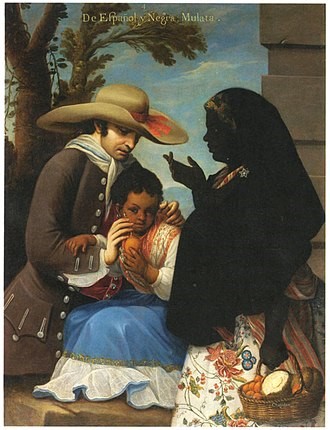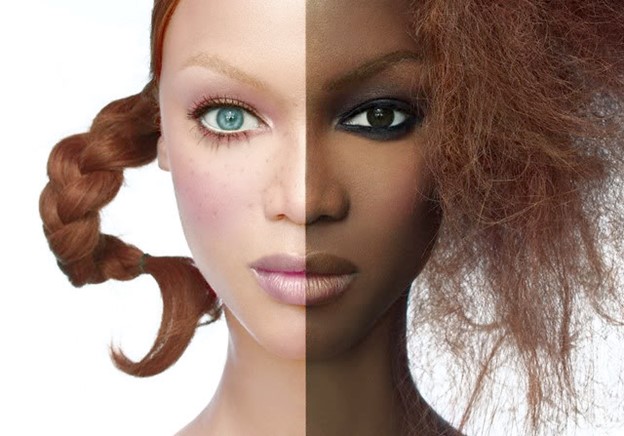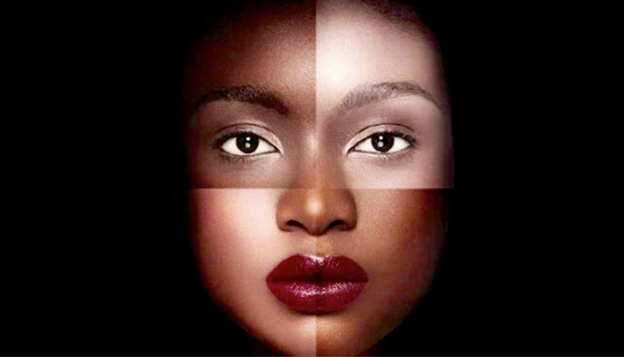Colorism refers to the discrimination or prejudice based on an individual’s skin tone, particularly within the same racial or ethnic group. In this article, we delve into the intricate web of colorism, specifically examining its intersection with social status. By exploring the historical context, the influence on social perception, and the impact on individuals’ lives, we aim to shed light on this complex phenomenon.
Historical Context of Colorism
To comprehend the prevalence of colorism, we must trace its roots to colonialism and slavery. European colonization and the transatlantic slave trade significantly influenced colorism’s emergence, as societies developed hierarchical systems based on skin color. Lighter-skinned individuals were often accorded privileges and elevated social statuses, while those with darker skin tones faced discrimination and subjugation.

During this period, colorism became deeply intertwined with racial hierarchies. The ideology of white superiority and Eurocentric beauty standards became entrenched, with lighter skin considered more desirable and indicative of higher social status. This ideology propagated the perception that lighter-skinned individuals possessed greater intellect, beauty, and moral superiority, further perpetuating the systemic discrimination against those with darker skin tones.
Skin Tone and Social Perception
The human mind is inherently prone to forming quick judgments, and skin tone plays a significant role in shaping social perceptions. Whether consciously or subconsciously, individuals tend to associate certain traits and stereotypes with specific skin tones.
In many cultures, light-skinned individuals are often considered more attractive, intelligent, and socially desirable. They may be perceived as possessing higher levels of success, prestige, and refinement. These perceptions, though rooted in baseless assumptions, can influence social interactions, professional opportunities, and even the formation of personal relationships.
On the other hand, darker-skinned individuals often encounter prejudice and negative stereotypes. They may face assumptions of being less intelligent, less attractive, and lacking in social standing. Such biases can lead to the marginalization of individuals with darker skin tones, hindering their access to social and economic opportunities.

The media plays a crucial role in perpetuating these perceptions and beauty standards. Advertisements, films, and popular culture often depict light-skinned individuals as the epitome of beauty and success, reinforcing the idea that lighter skin equates to higher social status. This influence is particularly pronounced in industries such as fashion and entertainment, where limited representation of darker-skinned individuals further exacerbates the problem.
Colorism and Economic Opportunities

Colorism has far-reaching implications for economic opportunities, as individuals with darker skin tones often face disparities in employment and income. Studies have shown that job applicants with lighter skin are more likely to be hired and receive higher salaries compared to their darker-skinned counterparts with similar qualifications and experience. This bias within the labor market perpetuates social and economic inequalities, limiting the upward mobility of those affected by colorism.
Furthermore, colorism manifests within professional environments, where individuals with lighter skin tones are more likely to be promoted, given leadership positions, and entrusted with greater responsibilities. This not only deprives qualified individuals of equal opportunities but also perpetuates a cycle of limited representation and exclusion.
Colorism’s impact on educational attainment is also significant. Students with darker skin tones may face prejudices from teachers and peers, leading to lower expectations and limited access to quality education. This, in turn, hampers their chances of pursuing higher education and securing well-paying jobs, further exacerbating the economic disparities rooted in colorism.
Colorism and Relationships

The influence of colorism extends into the realm of personal relationships, where skin tone preferences can shape dating patterns and marital choices. Research has shown that individuals often express a preference for partners with lighter skin tones, subscribing to societal beauty standards that associate lightness with desirability and success. This bias can create challenges for individuals with darker skin tones, who may face rejection or limited opportunities for romantic involvement.
Within families, colorism can have a profound impact on self-esteem and familial dynamics. Light-skinned individuals may receive more favorable treatment and validation, while their darker-skinned counterparts may experience feelings of inferiority and exclusion. This differential treatment based on skin tone can perpetuate harmful beliefs and contribute to the internalization of colorism within family structures.
Intersectionality and Colorism

Understanding colorism necessitates an examination of its intersection with race, gender, and other social categories. The experiences of colorism can vary depending on an individual’s racial or ethnic background. For example, within communities of color, colorism manifest differently for individuals of African, Asian, or Latin descent. Factors such as historical context, cultural norms, and beauty standards shape the specific dynamics of colorism within these communities.
Gender also plays a significant role in colorism, as societal expectations and beauty standards differ for men and women. In many cultures, women with lighter skin are often considered more attractive and feminine, while men may face different stereotypes and biases. These intersecting identities contribute to a complex web of discrimination, requiring an intersectional approach to understanding and addressing colorism.
Consequences of Colorism
The consequences of colorism are not limited to superficial judgments or personal preferences. They have profound effects on individuals’ psychological well-being, perpetuation of societal inequities, and the reinforcement of discrimination. Those who experience colorism may develop low self-esteem, feelings of inadequacy, and even mental health issues as a result of the pervasive biases they encounter.
Moreover, colorism perpetuates social and economic inequalities, as individuals with darker skin tones face barriers to success and upward mobility. The reinforcement of colorism through media representation, beauty standards, and social norms only serves to deepen these inequities and limit the opportunities available to those affected by colorism.
To address colorism, concerted efforts are needed on multiple fronts. Education and awareness about the damaging effects of colorism can help challenge and dismantle these biases. Media representation that embraces diverse skin tones and beauty standards can contribute to more inclusive narratives and norms. Additionally, policies and measures promoting equal opportunities and fair treatment in employment, education, and other domains are essential to combat the systemic effects of colorism.
Conclusion
Colorism, with its roots in historical injustices, continues to exert a powerful influence on individuals’ lives and society as a whole. By examining the intersection of skin tone and social status, we have gained insight into the complex dynamics at play. From economic disparities to relationship preferences, colorism leaves no aspect of life untouched.
To build a more equitable and inclusive society, it is imperative that we challenge and dismantle colorism in all its forms. This requires ongoing dialogue, education, and advocacy to raise awareness and promote acceptance of diverse skin tones. By embracing the beauty and worth of every individual, regardless of their skin tone, we can strive for a future free from the shackles of colorism and foster a society where all are valued and celebrated.
References:
Dixon, S., & Telles, E. E. (2017). Skin Color and Colorism: Global Research, Concepts, and Measurement. Annual Review of Sociology, 43, 405-424.
Hall, R. E. (1992). The Bleaching Syndrome: African Americans’ Response to Cultural Domination Vis-à-Vis Skin Color. Journal of Black Studies, 22(2), 187-202.
Herring, C. (2009). Does Diversity Pay?: Race, Gender, and the Business Case for Diversity. American Sociological Review, 74(2), 208-224.
Hunter, M. (2007). The Persistent Problem of Colorism: Skin Tone, Status, and Inequality. Sociology Compass, 1(1), 237-254.
Roberts, D. E. (2011). Fatal Invention: How Science, Politics, and Big Business Re-create Race in the Twenty-first Century. New York: The New Press.
Russell, K., Wilson, M., & Hall, R. (1992). The Color Complex: The Politics of Skin Color among African Americans. New York: Anchor Books.
Shih, M., Bonam, C. M., Sanchez, D. T., & Peck, C. R. (2007). The Ideal(ized) Woman: Mediating Colorism, Identity, and Racial-ethnic Self-esteem. Cultural Diversity and Ethnic Minority Psychology, 13(2), 140-145.
Thompson, M. S., & Keith, V. M. (2001). The Blacker the Berry: Gender, Skin Tone, Self-esteem, and Self-efficacy. Gender & Society, 15(3), 336-357.

